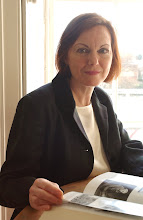
 Many people reading this blog will have heard of Edward Jenner (1749-1823, top picture), the British country doctor who injected matter from the pustule of Sarah Nelmes, a milkmaid infected with cowpox (picture), into healthy people to protect them from the much more deadly disease, smallpox. Jenner became an international hero and has many memorials around the world including a stained glass window in St Mary’s Church, Berkeley, Gloucestshire, where he lived and practised; a statue in Kensington Gardens, London; and even an Institute – the Jenner Institute in Oxford – whose mission is to develop innovative vaccines.
Many people reading this blog will have heard of Edward Jenner (1749-1823, top picture), the British country doctor who injected matter from the pustule of Sarah Nelmes, a milkmaid infected with cowpox (picture), into healthy people to protect them from the much more deadly disease, smallpox. Jenner became an international hero and has many memorials around the world including a stained glass window in St Mary’s Church, Berkeley, Gloucestshire, where he lived and practised; a statue in Kensington Gardens, London; and even an Institute – the Jenner Institute in Oxford – whose mission is to develop innovative vaccines.Other doctors who served their communities as GPs and have made a global difference to the health and well-being of populations include James Parkinson (1755-1824), who first described Parkinson’s disease; Sir James Mackenzie (1853-1925), who contributed to our understanding of heart disease and showed how digitalis worked on the heart; and John Snow (1813-1858), who stopped a cholera epidemic in central London by removing the handle of a pump, thereby proving that the infection was spread through water. This was long before microscopic ‘germs’ were discovered.
Some doctors are famous for being something other than a doctor! Who, for example, knows that the legendary cricketer, WG Grace (1848-1915), was in fact a family doctor who trained at Bristol Medical School.
This project aims to find all the memorials to general practitioners around Britain, whether they became ‘famous’ or not. The Heritage Committee and the Archivist at the Royal College of General Practitioners have begun a search but we believe that there are many more to be found. Do you have a medical ancestor with a memorial? Have you regularly walked past a memorial to a doctor and wanted to know more about him or her? Do you know of a street named after a doctor? If you can help build our medical heritage I’d like to hear from you. The stories and images will be posted on this blog and I’ll fill in the medical history gaps as we go along.
